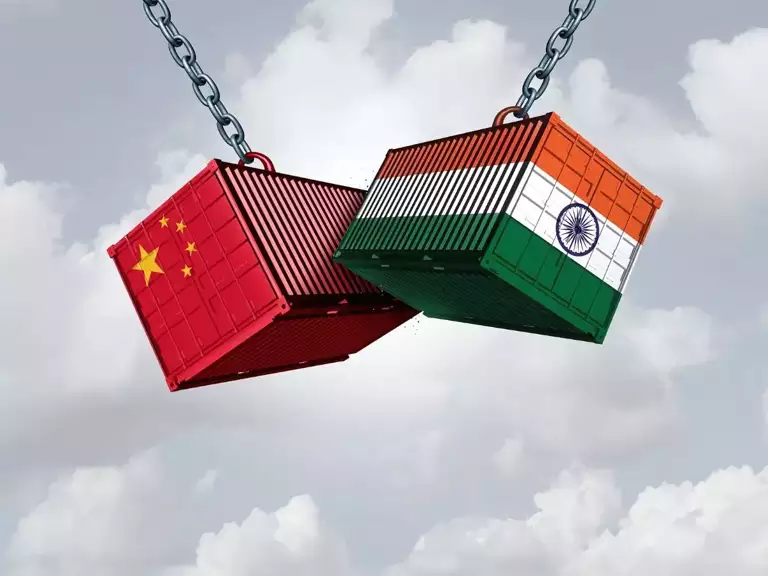
The global supply chain, once heavily concentrated in China, is undergoing a profound re-evaluation. Geopolitical shifts and recent disruptions have prompted a clear mandate: diversify. While China remains a manufacturing powerhouse, the question that has emerged topmost in global textile and apparel markets is: Will India weave its own global story in textiles and apparel?
The procurement paradox
As Elena Petrova, Head of Global Sourcing for Zenith Apparel points out, it's never just about the lowest wage. Her directive: reduce reliance on any single region by 20 per cent. Initially, India's lower tariffs and seemingly cheaper labor promised savings. However, the reality of execution quickly surfaced.
Petrova’s internal reports, mirroring data from the World Bank and ILO, highlight a critical productivity gap. She says, China's output-per-worker in our apparel lines is still 1.3 to 1.5 times higher than in comparable Indian facilities. This isn't a talent deficit in India; it's about China's ingrained systemic efficiency, refined workflow discipline, and decades of mature Quality Control (QC) systems. Petrova, emphasized the ‘cost per unit. If lower hourly wages in India translate to 30-50 per cent more hours for the same quality garment, your unit economics don't improve much. Many Indian apparel units have longer pre-production lead times units, a consistent challenge cited in industry analyses. For high-volume, high-consistency basic garments, China's combination of speed, scale, and predictability remains unmatched.
Table: China vs India work a comparison
|
Metric |
China (Approx.) |
India (Approx.) |
|
Output-per-worker |
1.3-1.5x India's |
Lower |
|
Manufacturing Share of GDP (2004) |
~17% |
~17% |
|
Manufacturing Share of GDP (Current) |
World's largest |
~13% |
|
Primary Export Strength |
Mass production, synthetics, scale, full-package |
Cotton, handlooms, value-added, small batches |
|
Logistics/Infrastructure |
Advanced, integrated supply chains |
Fragmented, infrastructure bottlenecks |
|
Technological Investment |
High, continuous automation |
Investing, but from a lower base |
|
Lead Times (Pre-production) |
Optimized |
Often longer |
Stakeholder’s views
Isabella Rossi, founder of 'EcoChic', a boutique brand focused on ethically sourced, sustainable fashion, views the landscape differently. "For us, it's about finding the right partners for the right products. China excels in synthetic fibers and large Minimum Order Quantities (MOQs). Our brand's core is natural fabrics – organic cottons, bamboo, hemp – and intricate handwork."
This is where India shines. "India's rich heritage in textiles, its mastery of handloom, embroidery, and diverse fabric printing, is unparalleled," Rossi explains. "They offer flexibility in smaller order quantities and custom designs rarely found in mass-production hubs. We accept a slight premium for this craftsmanship and robust ethical sourcing, which reports confirm positions India well for value-added and sustainable segments."
A multi-decade evolution
Anya Sharma, a senior analyst at 'Global Supply Chain Insights', frames the shift as a complex, multi-decade evolution rather than an abrupt replacement. As per Sharma, the 'China Plus One' strategy has gained momentum due to geopolitical tensions and the sheer scale of China's dominance. Companies like Gap Inc. reducing reliance on China while increasing sourcing from India, Vietnam, and Bangladesh exemplify this, building a more resilient, diversified network.
The systemic distinctions are clear:
Infrastructure & integration: China's strength is in its vertically integrated supply chains and sophisticated infrastructure – expressways, state-of-the-art ports. India, despite investments through initiatives like PM MITRA Parks and 'Make in India,' still faces a fragmented supply chain, higher logistical costs, and a complex regulatory environment.
Skill development & automation: China's state-backed vocational programs have produced millions of skilled workers over decades. India is progressing, but from a lower base. The investment gap in textile machinery is substantial, directly impacting productivity.
Policy & competitiveness: Indian government actively pushes competitiveness via schemes like PLI (Production Linked Incentive) and RoSCTL (Rebate of State and Central Taxes and Levies). However, the absence of comprehensive Free Trade Agreements with major consumer markets, unlike Vietnam and Bangladesh, still disadvantages Indian exports with higher tariffs.
For example, NexGen Athletics, a sportswear major, that traditionally sourced 80 per cent of its technical apparel from China. Facing tariffs and de-risking pressure, their strategy involved a gradual shift. China remained primary for high-volume synthetics and complex bonded garments due to its man-made fiber expertise. For a new line of organic cotton activewear and specialized accessories requiring intricate stitching and smaller runs they onboarded new partners in India.
The initial phase included extensive on-site training, QC protocol sharing, and machinery investment in India. "Transferring designs wasn't enough," stated Mark Jensen, NexGen's VP of Operations. "We had to transfer knowledge, build relationships, and adapt to different operational rhythms. The learning curve was steep, but the long-term benefits of a diversified, resilient supply chain, leveraging India's strengths in natural fibers and value-added processes, are undeniable."
A collaborative future
The idea of India replacing China is overly simplistic, point out experts. China's manufacturing prowess, built over decades of investment, won't be easily superseded, particularly in mass-volume, high-efficiency synthetic textile production. Its role is evolving, potentially shifting towards upstream component supply and investment in other hubs.
India, with its vast workforce, rich textile heritage, labor cost advantages, and growing focus on sustainability and specialized production, is emerging as a critical, complementary sourcing destination. Its journey involves maturation through sustained investment in infrastructure, skill development, and policy reforms to bridge productivity gaps.
The future of global textile and apparel sourcing is not a zero-sum game. It's a complex space where China and India, alongside other emerging hubs, will play increasingly specialized and interconnected roles, contributing to a more resilient, diversified, and globally responsive supply chain. The true question isn't whether India is ready to replace China, but rather, how effectively it can complement and compete within an ever-shifting global economic landscape.












